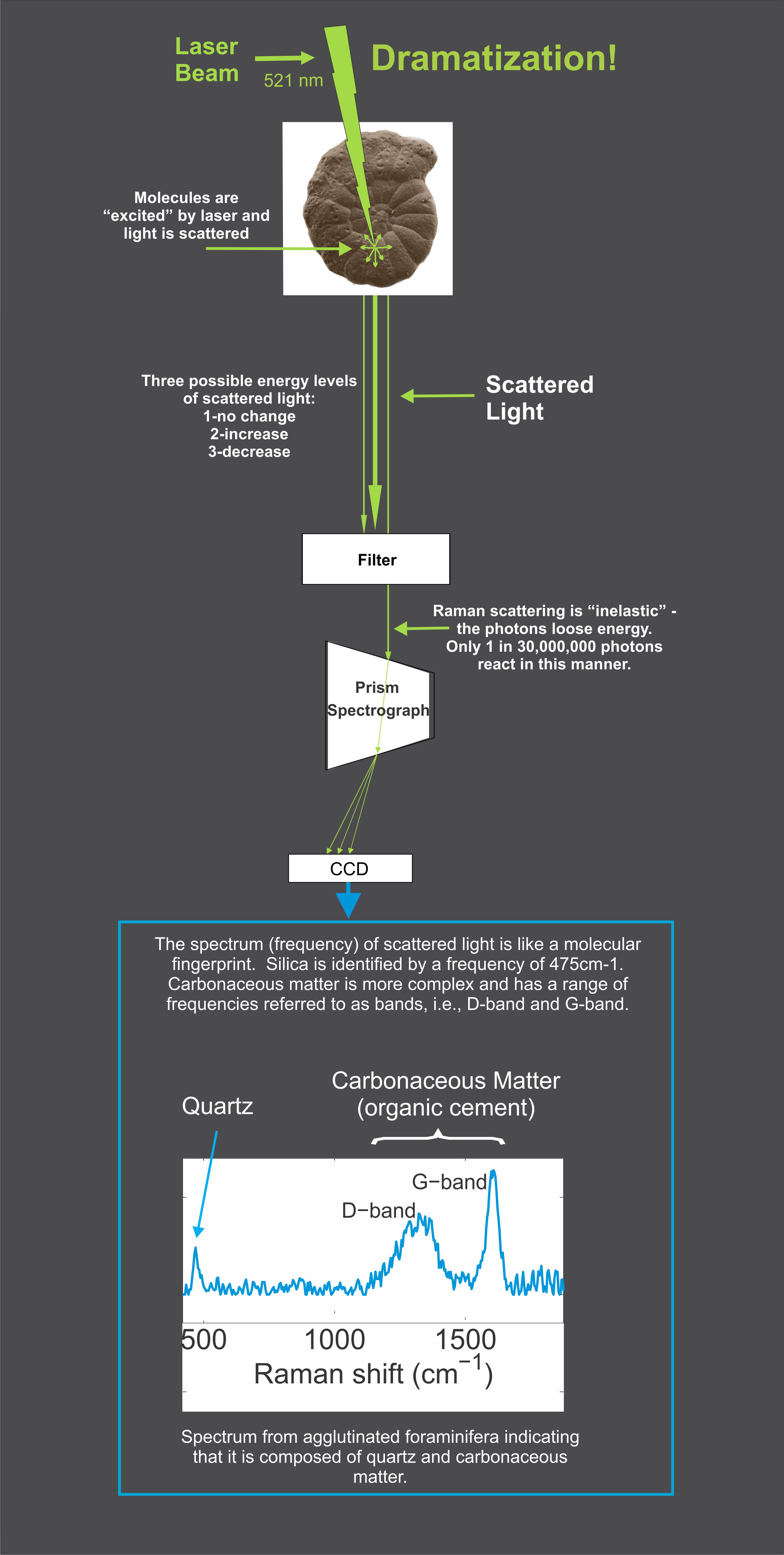Raman spectroscopy is a technique used to determine the composition of almost any material. It relies on focusing a laser beam on an object, then analyzing the wave lengths of the energy given off to determine its chemical nature. Recent technological advancements have made Raman analyzers accessible to a broad scientific community, but it is still under-utilized in geoscientific research. McNeil et al. (2015) have used Raman spectroscopy to analyze microscopic amounts of fossil organic matter in agglutinated foraminifera and document progressive, geothermally controlled, changes in organic matter in agglutinated forams in the Beaufort-Mackenzie Basin. This established the usefulness of Raman spectroscopy in petroleum exploration and, for the first time, used Raman spectroscopy and agglutinated foraminifera to predict geological conditions favourable for the generation of hydrocarbons (i.e., recognizing the “oil window”).

For more information on the application of Raman spectroscopy and the thermal maturity of agglutinated foraminifera see the following publication: